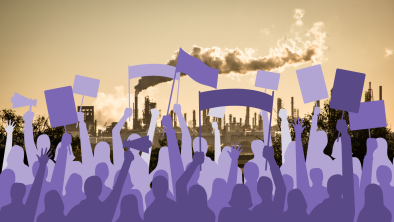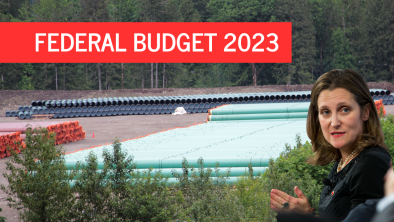Sorry, the environment and the economy don’t go hand-in-hand — but they could

This week’s report from the Intergovernmental Panel on Climate Change was a wake-up call for many who’ve thought of climate change as an issue for future generations. We’re projected to cross 1.5 degrees of warming, the globally agreed upon safe limit, by 2040. In order to have a reasonable chance of holding temperatures to that level, we need to eliminate carbon pollution over the same timeframe.
If successful, we’ll see enormous benefits even compared to allowing warming of two degrees. Ten million fewer people face flooding from sea level rise. Hundreds of millions of people avoid sinking into poverty. Half as many people face water shortages. Global fisheries and cereal crops lose much less productivity. Half as many plants and animals go extinct and half as many landscapes severely damaged. We save two million square kilometres of permafrost and even a few coral reefs.
Here’s the catch: the scientists say achieving this goal will require “rapid, far-reaching and unprecedented changes in all levels of society.” But the sum total of all nations’ emissions reductions puts us on the path to over three degrees of warming and many countries are having trouble even meeting those inadequate targets. It’s clear this challenge is going to require far more ambition.
Prime Minister Trudeau is often pressed on his government’s commitments to climate action, in light of its approvals of fossil fuel megaprojects. Over and over, his cabinet assures us “the environment and the economy go hand-in-hand.” Who could argue with such a vague, feel-good platitude? Unfortunately, when it comes to carbon emissions and the energy economy, it’s demonstrably false.
Production of oil and gas is the number one polluter in Canada. It creates more carbon than all the trucks, cars, planes, ships and trains in the nation combined. This industry, by definition, must disappear if we are to reach a post-carbon economy. Instead, the federal government is celebrating the construction of a new LNG project in Kitimat and plotting how to restart the Trans Mountain pipeline expansion. Both of these projects, and the fracking fields and tar sands mines to fill them, are scheduled to be around decades after scientists tell us we need to have reduced carbon pollution to zero.
Foregoing the economic growth these projects promise makes people nervous, and that’s understandable. Growth has been our raison d’etre for decades if not centuries. And it’s fair to say the environmental movement has not done a great job articulating a vision for this economy beyond solar panels and electric cars. What does a post-carbon economy look like?
There are two schools of thought on how we decarbonize. By far the most popular is known as “decoupling,” the idea that we need to divorce carbon emissions from economic growth. This often involves putting a steadily rising price on carbon so that households and businesses choose cleaner options. It’s worth noting the IPCC says the fee may need to rise from currently around $30 to $5,500 per tonne by 2030 in order to put us on track — far higher than Canada plans. That would be hugely disruptive to the economy, but governments can cushion the blow by rebating those hardest hit and investing in green projects. New industries would flourish to replace those that disappear.
Policymakers and business interests favour this method since it preserves the underlying logic of the economy. On the other hand, many are skeptical that green growth is desirable or even possible. It’s theoretically the most efficient way to cut carbon and some economies have reduced emissions with a modest carbon price. But politicians are reluctant to inflict rising costs on industry and the public, leading to inevitable workarounds and backpedalling.
What has not been part of the mainstream discourse is the more radical notion of “degrowth.” This would involve better use and distribution of resources while decreasing consumption — doing more with less. There’s no reason we can’t use our unprecedented technology to provide for the basic needs of every human. Worker-owned businesses and local artisans could manufacture long-lasting products from renewable materials. Policies that encourage workplace democracy, sharing networks, community self-reliance and resource conservation can ensure people thrive even as economic growth declines. Our culture would start deriving self-worth and well-being from family, culture, nature and community instead of brands and merchandise.
Both of these strategies are necessary for us to transition to a post-carbon economy. Our debate must now centre around which tools to use and how to manage the tumultuous fallout. But let’s be clear — neither method involves expanding polluting oil and gas infrastructure. Tar sands pipelines and LNG terminals may bring a few years of economic growth but they take us farther away from our goal and we do not have time to waste. We must, as a society, be capable of thinking further than the next election cycle or financial statement. And it’s long past time for our leaders to be honest about the transformative change we need to enact.


